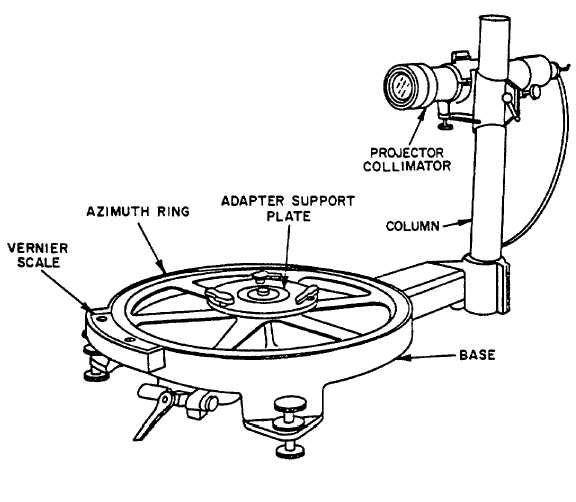|
| |
TM 9-254
10-6.
Azimuth Test Fixture - Continued
Figure 10-5. Azimuth Test Fixture
10-7.
Telescope Test Fixture.
a.
Description. The telescope test fixture (fig. 10-6) consists of a machined base mounting, a projector
collimator, and two telescope supports. The projector collimator is fixed on one end of the base, and one telescope
support is fixed on the opposite end of the base. A moveable telescope support is mounted on a machined track which
can be adjusted to accommodate different instruments. Various adapters (fig. 10-7) are used with the fixture to
accommodate straight tube and elbow telescopes. Setup gage blocks and locating blocks (fig. 10-8) are also provided to
properly position the particular telescope to be tested. The adapters, setup gage blocks, and locating blocks are all
marked with a lettering system, and a chart is furnished to give the proper combination of accessories to be used with the
specific telescopes.
b.
Use. The telescope test fixture is used for the adjustment and inspection of elbow and straight tube
telescopes. Some of the instruments that are checked with this fixture are the M-97 Straight Tube Telescope, M-90F
Telescope, and the M-16 Elbow Telescope. This test fixture can also be used to roll test certain instruments such as the
Nike Radar Telescope or the Collimating Telescope. This is accomplished by superimposing the telescope reticle on the
reticle of the projector collimator. The telescope is then rotated 180 degrees and it should be noted how far the reticle in
the telescope has moved up or down from its original position.
10-5
|

